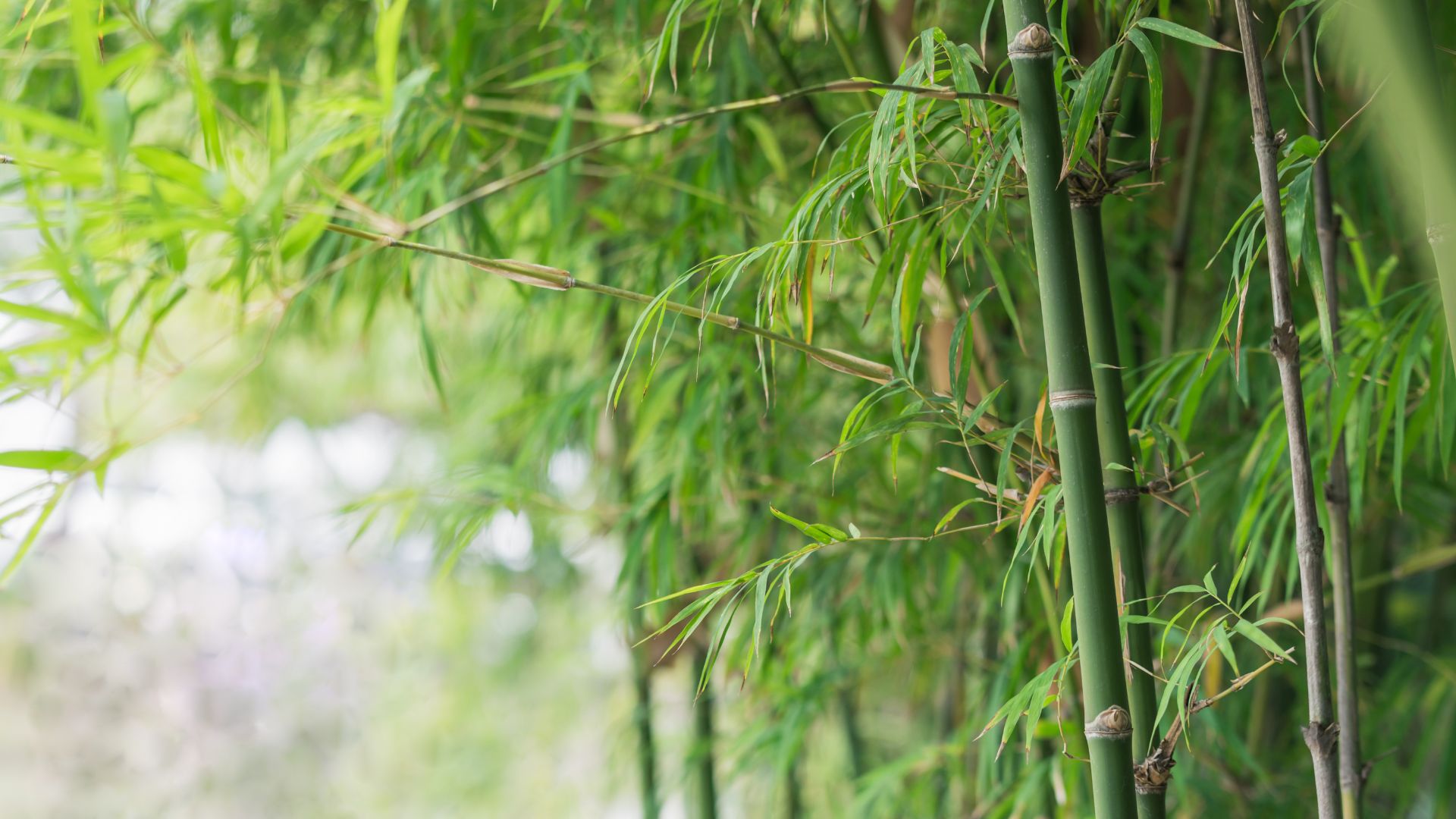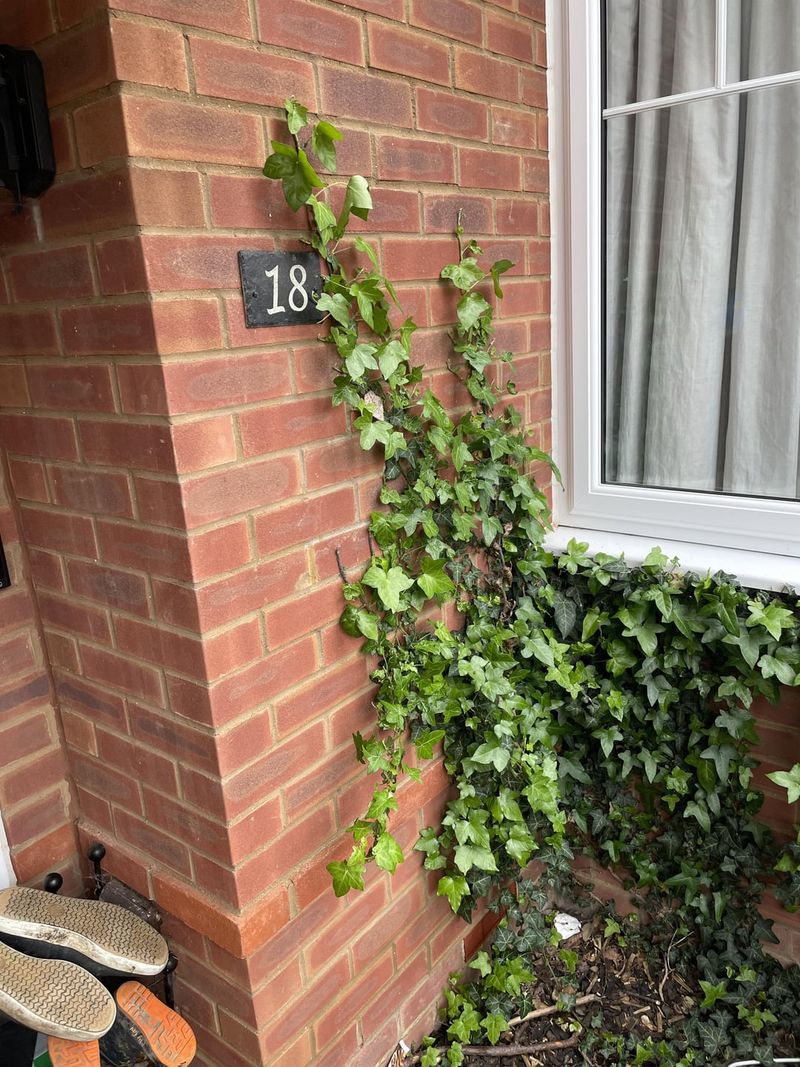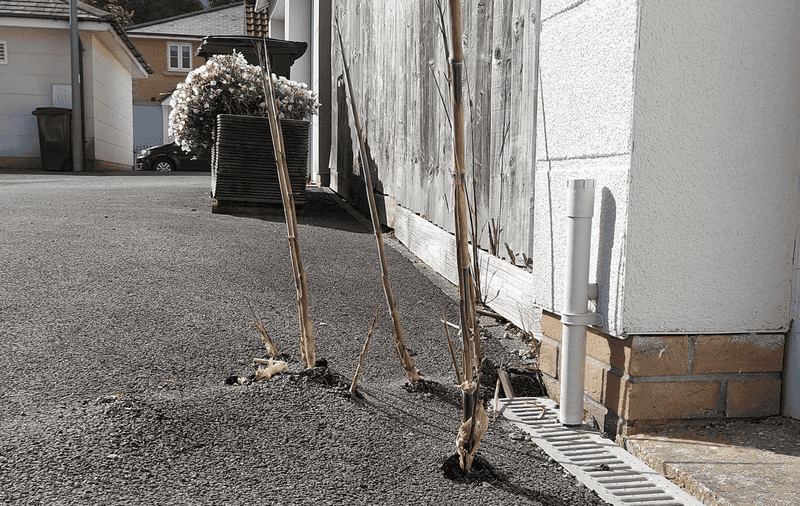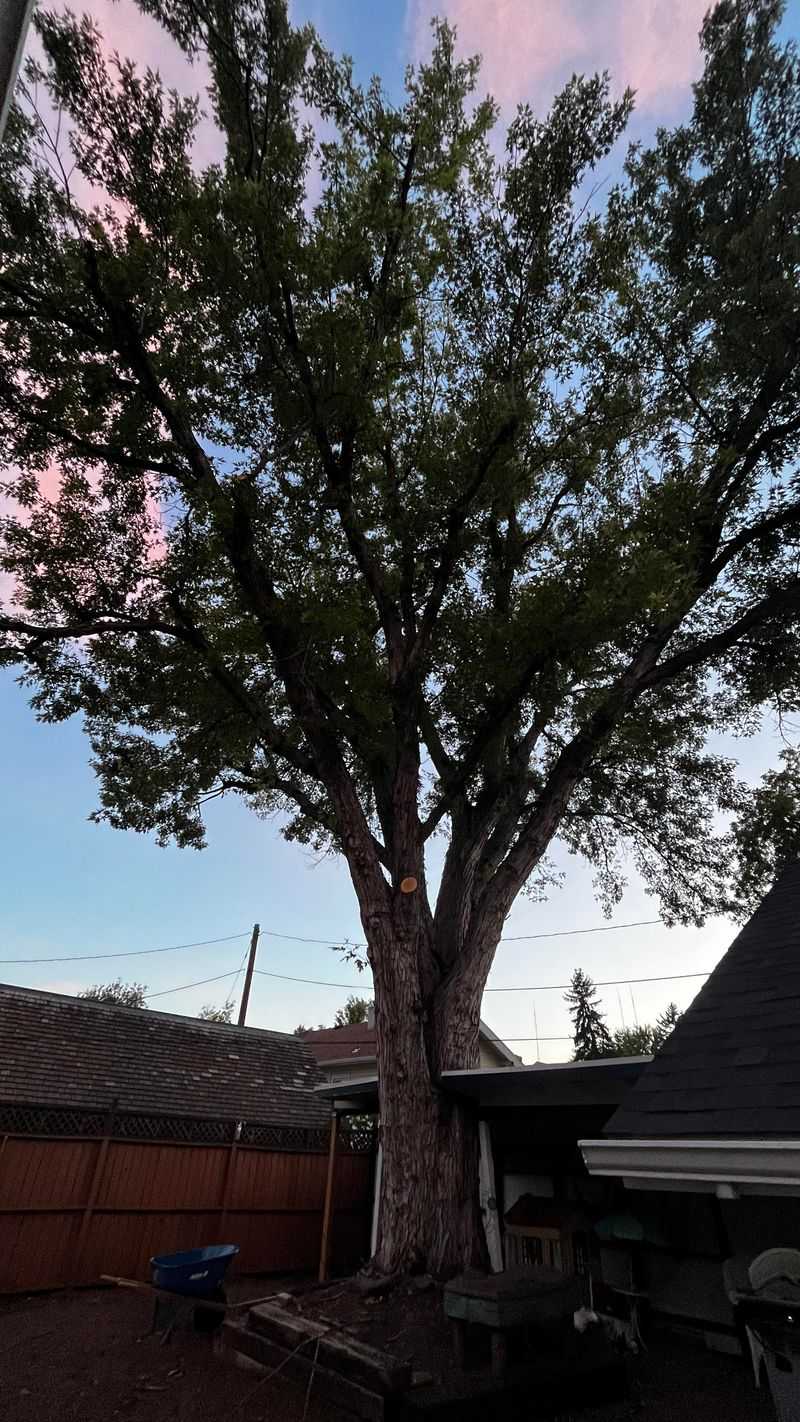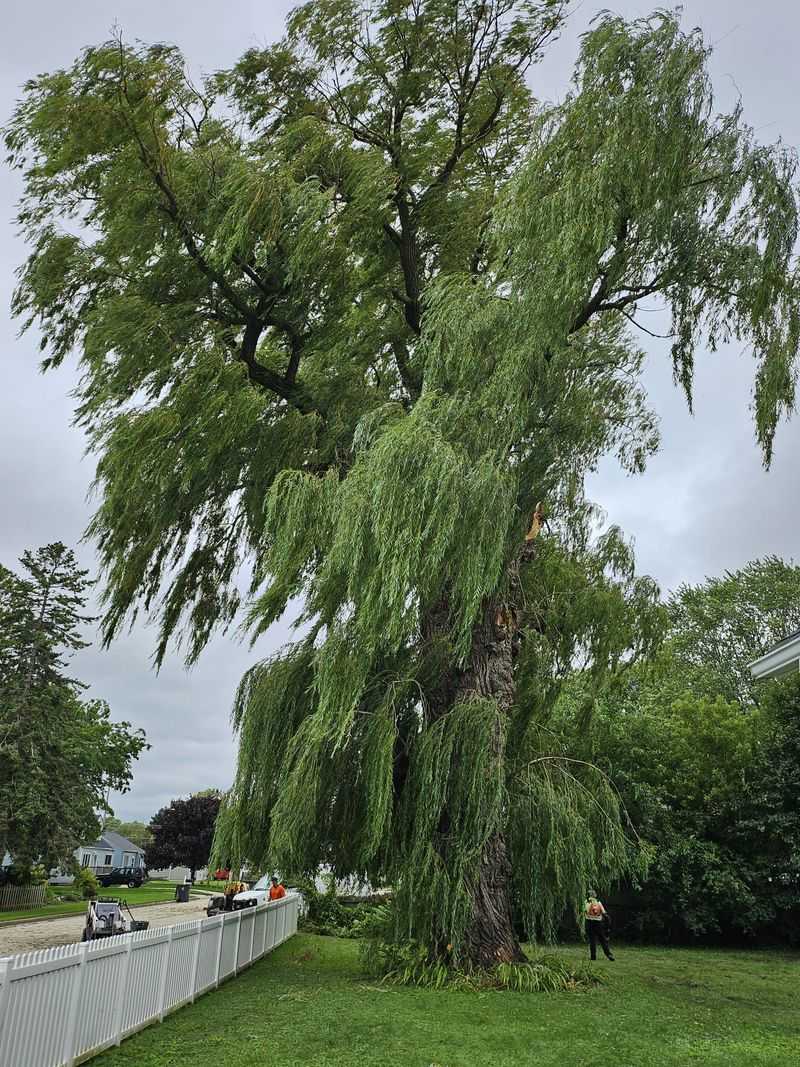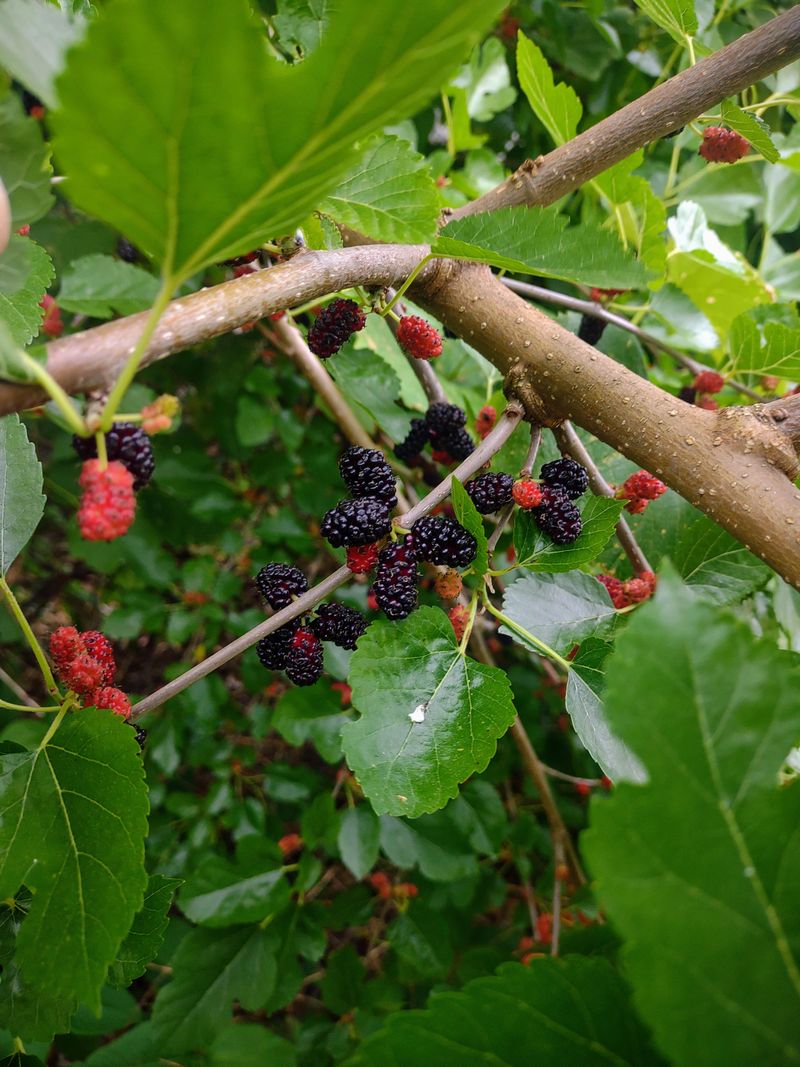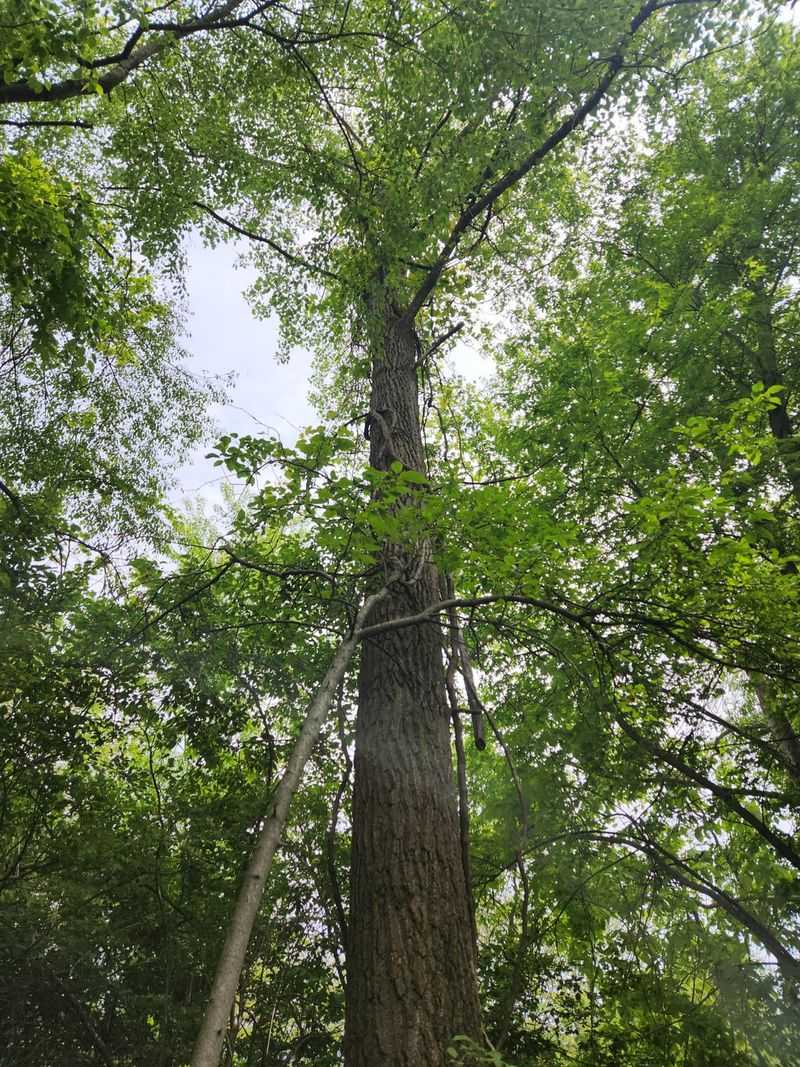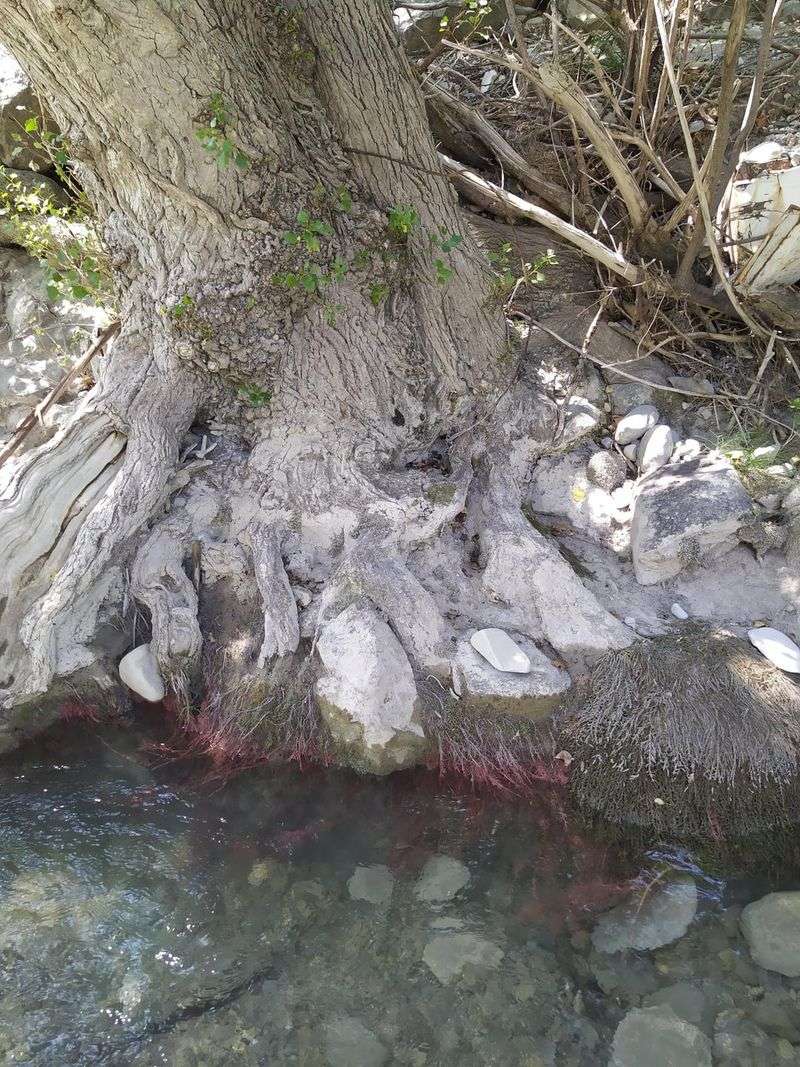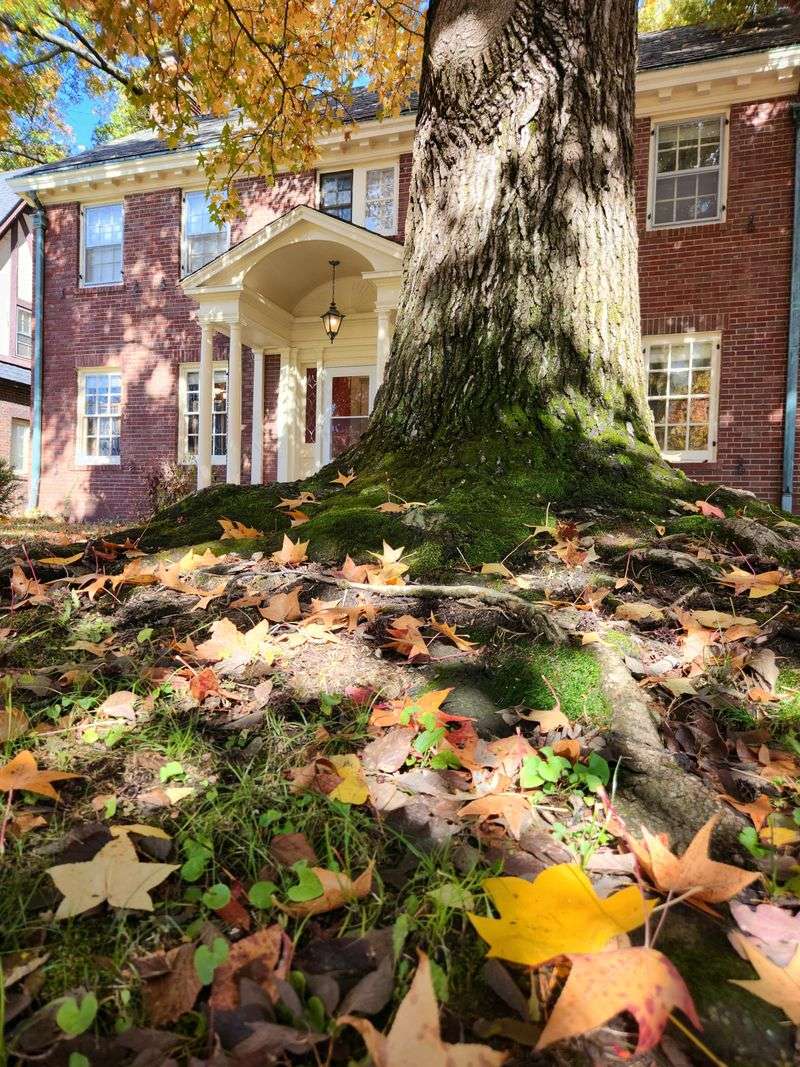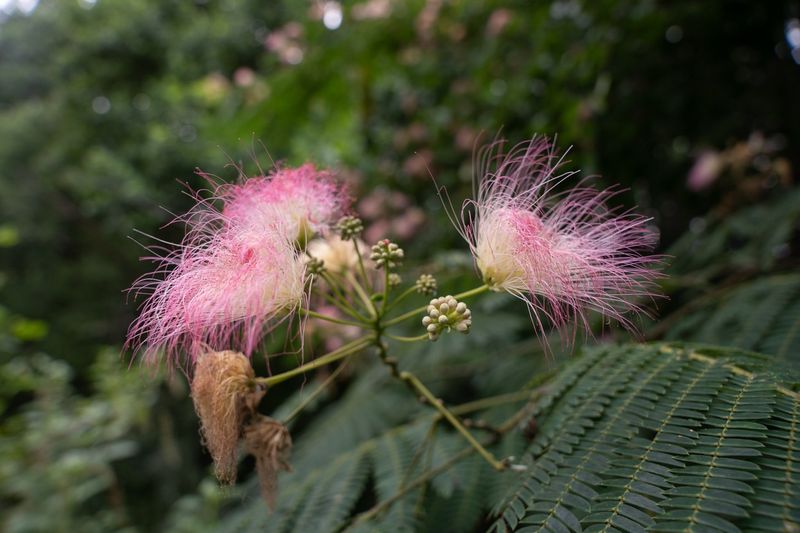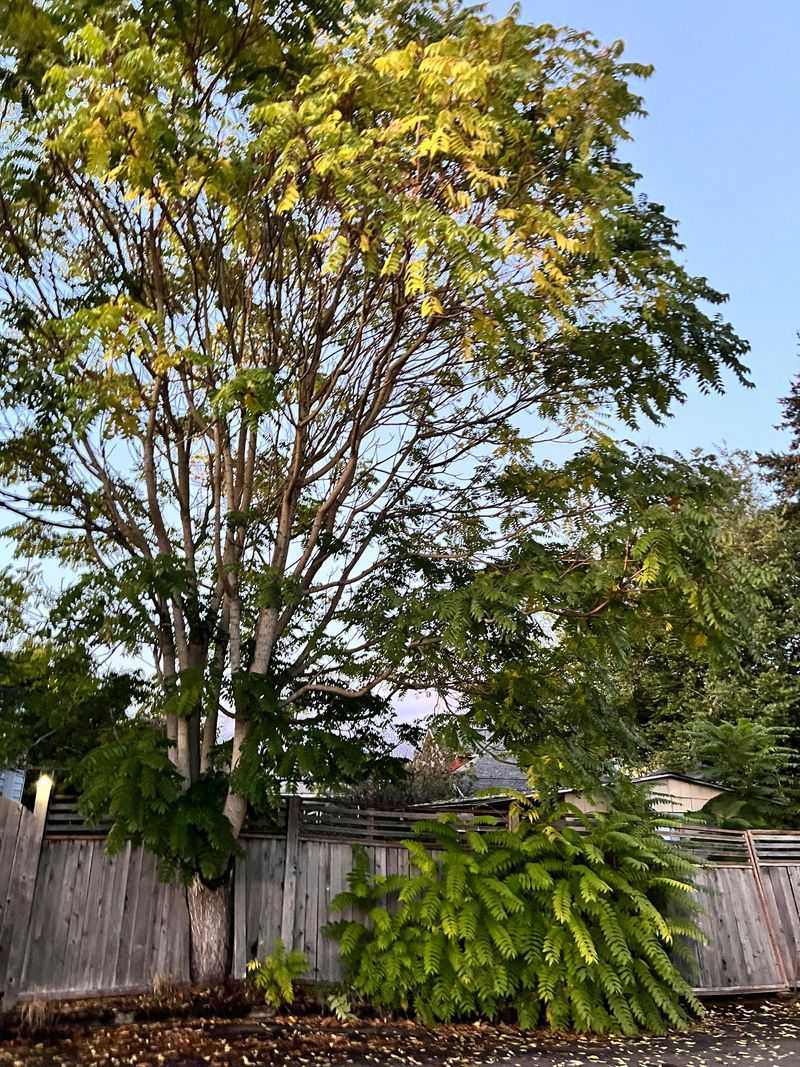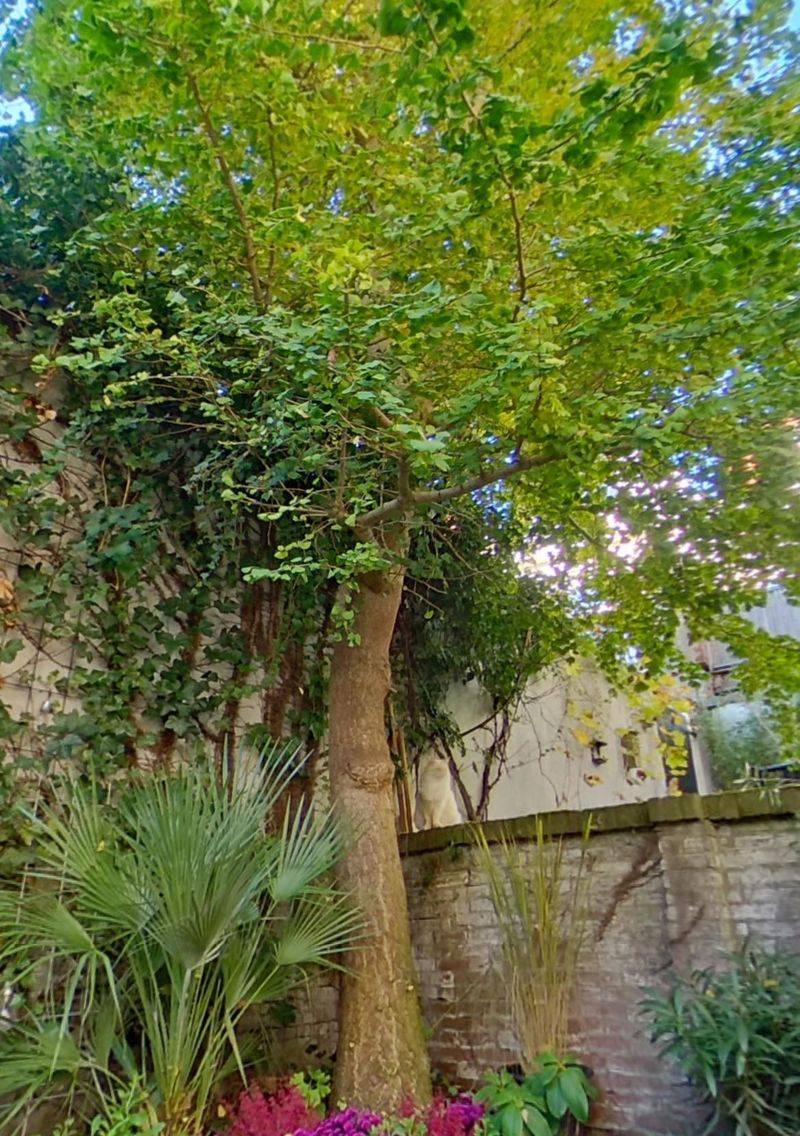Planting the wrong greenery near your home might seem harmless at first—but it can lead to expensive damage and big regrets. Roots that crack foundations, pollen that triggers allergies, and invasive behavior aren’t just minor annoyances.
They’re costly surprises waiting to happen. I learned this the hard way after planting bamboo near my patio. It looked great—until it started creeping toward the foundation like it had a mission. Picking plants for curb appeal is one thing, but knowing how they behave underground is another story altogether.
Seasoned gardeners spot these red flags quickly. They know which plants attract pests, break concrete, or turn into constant headaches. A little knowledge upfront makes all the difference—so your landscaping lifts your home, not tears it down.
1. English Ivy: The Wall Destroyer
Those charming vines can actually tear apart mortar between bricks and create entry points for moisture and pests. The tiny aerial rootlets dig into surfaces, causing damage that’s often discovered too late.
Removing established ivy often damages paint and exterior finishes. I’ve seen houses where entire sections of siding had to be replaced after ivy removal.
While it might look quaint and cottage-like, the maintenance headaches and potential structural damage make this plant a poor choice for growing against your home.
2. Bamboo: The Unstoppable Invader
Running bamboo varieties can travel astonishing distances underground, emerging where least expected – like through your patio or foundation. Their aggressive rhizomes can crack concrete and penetrate tiny foundation cracks.
Once established, bamboo can be nearly impossible to fully eradicate without professional help. My neighbor planted bamboo as a privacy screen, only to have it tunnel under the fence and emerge in her basement light well.
Even “clumping” varieties eventually spread beyond their intended boundaries.
3. Silver Maple: The Plumbing Nightmare
Fast-growing with shallow, spreading roots, silver maples actively seek out water sources – including your home’s water and sewer lines. Their roots can infiltrate small cracks in pipes, expanding and eventually causing complete blockages.
The repair costs can be staggering, often requiring excavation and pipe replacement. Last summer, my sister spent over $5,000 fixing sewer line damage caused by her neighbor’s silver maple.
Their brittle branches also break easily in storms, creating hazards for nearby structures.
4. Weeping Willow: The Foundation Threat
Despite their graceful appearance, weeping willows develop massive, water-hungry root systems that can extend up to three times the canopy width. These aggressive roots seek moisture relentlessly, often targeting water and sewer lines.
Their shallow root systems can buckle sidewalks, patios, and even crack foundations when planted too close. A landscaper friend told me about removing a willow that had caused $12,000 in foundation damage to a client’s home.
The falling branches and constant leaf litter create additional maintenance issues.
5. Mulberry Trees: The Messy Stain-Maker
Mulberry fruits create persistent purple stains on sidewalks, cars, and siding that are nearly impossible to remove completely. The fallen berries attract nuisance birds that leave droppings all over your outdoor spaces.
Male trees produce enormous amounts of pollen that trigger allergies. Female trees drop those infamous staining berries by the thousands.
After cleaning mulberry stains off my driveway for three summers straight, I finally had the tree removed – the maintenance simply wasn’t worth the hassle.
6. Cottonwood: The Gutter Clogger
Each spring, female cottonwoods release millions of fluffy seeds that float through the air like summer snow. These fuzzy fibers clog gutters, air conditioners, and window screens with alarming efficiency.
The cottony fluff is also highly flammable, creating a potential fire hazard around homes. My cousin’s gutters caught fire during a dry spell after being packed with cottonwood fluff.
Their brittle wood and shallow roots make them prone to toppling in storms, endangering nearby structures.
7. Poplar Trees: The Short-Lived Giant
Poplars grow impressively fast but have notoriously weak wood and invasive root systems. Their rapid growth comes at the expense of structural integrity, making them prone to dropping large branches without warning.
Their roots aggressively seek water sources, often infiltrating drainage systems and foundations. We had a 30-foot poplar removed after discovering roots growing into our basement through a hairline foundation crack.
Most varieties live only 15-20 years before becoming hazardous, making them poor long-term investments for your landscape.
8. Bradford Pear: The Fragrant Disaster
Bradford pears emit an unpleasant fishy odor during flowering season that can permeate your entire property. Their branch structure creates tight “V” crotches that split apart during storms, often causing property damage.
These trees have become invasive in many regions, sprouting unwanted saplings throughout your yard. After watching my neighbor’s Bradford pear split in half during a mild thunderstorm, narrowly missing their car, I removed mine immediately.
Many municipalities have actually banned new plantings because of these serious issues.
9. Trumpet Vine: The Paint Peeler
The aerial rootlets of trumpet vine can work their way under siding and shingles, eventually prying them loose from your home. Their aggressive growth habit means they’ll quickly cover and potentially damage entire walls if left unchecked.
The sticky sap can permanently stain siding and is difficult to remove. When I finally removed the trumpet vine growing on my garden shed, it took half the paint with it.
These vines also attract carpenter bees, which can cause additional structural damage to wooden elements of your home.
10. Black Walnut: The Garden Killer
Black walnut trees produce juglone, a natural chemical that’s toxic to many popular garden plants and vegetables. The toxic zone extends far beyond the tree’s drip line, severely limiting what you can grow in your yard.
Falling nuts create hazards on walkways and can damage roofs, vehicles, and outdoor furniture. I watched my father wage a losing battle against a neighbor’s black walnut for years, unable to grow tomatoes anywhere in his yard.
Removing stains from the nut husks is nearly impossible once they’ve set.
11. Sweetgum Trees: The Ankle-Twisting Menace
Those spiky seed balls (called “gumballs”) create treacherous walking conditions and can damage lawn equipment when they fall by the thousands. They’re nearly impossible to rake effectively and can persist in your yard for years.
The surface roots frequently damage sidewalks and driveways as the tree matures. My aunt broke her ankle stepping on a sweetgum ball in her dark driveway, leading to an expensive and painful recovery.
The fallen seed pods can also clog gutters and drainage systems around your home.
12. Leyland Cypress: The Privacy Problem
Often planted as a privacy screen, Leyland cypress grows far larger than most homeowners anticipate – frequently reaching 60-70 feet tall. Their shallow roots make them prone to toppling in high winds or saturated soil conditions.
These trees are highly susceptible to deadly fungal diseases that can quickly spread through an entire row. After spending thousands on a beautiful cypress privacy screen, I watched helplessly as bagworms and canker destroyed all twelve trees within two years.
Their dense foliage collects ice and snow, causing branches to break under the weight.
13. Mimosa: The Messy Multiplier
Mimosa trees drop endless flowers, seed pods, and small leaflets that stain driveways and are difficult to clean up. Their seeds remain viable for decades, sprouting unwanted seedlings throughout your yard and garden beds.
The shallow roots frequently damage sidewalks, patios, and foundations. A landscape designer friend refuses to include mimosas in her plans after spending years helping clients deal with the aftermath of these messy trees.
Their weak wood structure makes them prone to breakage during storms.
14. Russian Olive: The Thorny Invader
The sharp thorns on Russian olive branches create hazards near walkways and play areas, easily causing painful scratches. These invasive trees spread aggressively through bird-dispersed seeds, creating unwanted thickets throughout your property.
Their dense root systems compete with other landscape plants for water and nutrients. After planting just one Russian olive as an accent tree, my neighbor spent three years trying to eradicate dozens of offspring that popped up throughout his yard.
Many states now prohibit planting them due to their invasive nature.
15. Tree Of Heaven: The Stinky Invader
Despite its heavenly name, this tree emits a distinctly unpleasant odor often compared to rancid peanut butter or burnt popcorn. Its extremely aggressive root system can damage foundations, sidewalks, and underground utilities.
Tree of Heaven produces thousands of wind-dispersed seeds and also reproduces through root suckers, quickly taking over gardens. When I helped a friend remove one from his backyard, we found roots that had traveled over 50 feet to sprout new trees near his house foundation.
It’s also the preferred host for spotted lanternflies, a destructive invasive pest.
16. Ginkgo (Female): The Vomit-Scented Fruit
Female ginkgo trees produce fruit with a truly revolting smell often compared to vomit or rancid butter. The fallen fruits create slippery hazards on walkways and track into your home on shoes, spreading the offensive odor.
The smell can be so pervasive that it makes outdoor spaces unusable during fruiting season. My former neighbors couldn’t use their patio for weeks each fall because of the female ginkgo planted nearby.
The stinky fruits attract flies and other unwanted insects to your yard.
17. Princess Tree (Paulownia): The Foundation Menace
Princess trees grow at an astonishing rate – up to 15 feet in a single season – with equally aggressive root systems that target foundations and water lines. Their massive leaves clog gutters and drainage systems when they fall in autumn.
Each tree produces up to 20 million seeds that remain viable for decades, creating endless volunteer seedlings. A friend discovered princess tree roots had cracked her pool’s concrete surround just three years after a sapling sprouted nearby.
Their brittle wood makes them susceptible to storm damage.

